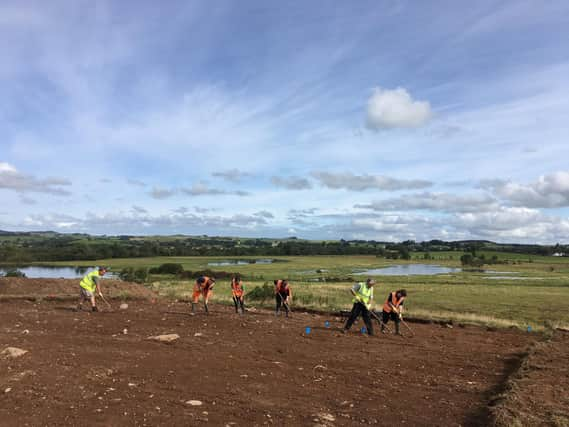Breakthrough on 10,500-year-old hazelnut shell illuminates ancient life in Scotland


The burnt fragment of shell was found on the Threave Estate near Castle Douglas in Dumfries and Galloway by amatuer archaeologists.
Now dated to between 8,547 and 8,312 BC, the Mesolithic snack has unlocked new details about those who have made the area home over time.
Advertisement
Hide AdAdvertisement
Hide AdThe hazelnut may have been eaten by some of the first people to return to what is now Scotland after the first Ice Age retreated, it is believed.
Derek Alexander, Head of Archaeology for the National Trust for Scotland, said: "Over the years we have gradually built up an understanding of past human activity at Threave throughout prehistory and history.
"This radiocarbon date for Mesolithic activity is really exciting, as it is the first evidence we have from this time and is the earliest date recovered at Threave so far.
The burnt remains of the shell were found by during an excavaton assisted by volunteers from a National Trust for Scotland Thistle Camp and Can You Dig It.
Discovered on prehistoric sites across the country, hazelnuts have long been established as a favourite snack of the Mesolithic people.
The people of Galloway at that time would have lived nomadically, moving between water and food sources as they became available.
Traces of human habitation within Scotland go back to around 12,000 BC, within the Upper Palaeolithic, but a period known as the ‘Loch Lomond Stadial’ saw a dramatic climatic downturn in Scotland around 10,900 BC.
This abrupt return to severe cold conditions, which caused the regrowth of glaciers and likely caused a complete depopulation of Scotland during this time.
Advertisement
Hide AdAdvertisement
Hide AdBy around 9,700 BC, however, the glaciers and ice-sheets had receded and human life began to return to Scotland.
Mr Alexander added; “It is possible that the people who burnt this nutshell at Threave could have been amongst the first to re-populate the country.It’s great that the Thistle Camp and Can You Dig It volunteers have been able to be part of this process of delivery too."
More evidence of an Iron Age enclosure on a hilltop site within the estate has also been discovered, with samples taken from the site now dating to AD 75 to 214 – firmly within the Iron Age.
It is not yet clear what the enclosure would have been used but the site’s expansive views and travel links afforded by a passing river, would have made it a desirable location.
Claire Williamson of Rathmell Archaeology, who is delivering Can You Dig It for the Galloway Glens, said: “The results from these two dates continue to add to the surprises that have already come from this little-known site.
"Having the Iron Age date of the enclosure confirmed was what we were hoping for, but to also have this small indication of Mesolithic life on the estate is amazing. This could not have been possible without the hard work of the volunteers, who’s enthusiasm for the archaeology never faltered, even in high winds! It’s great to see how, even at this stage, the results of their hard work continue to add to our archaeological knowledge of the area.”